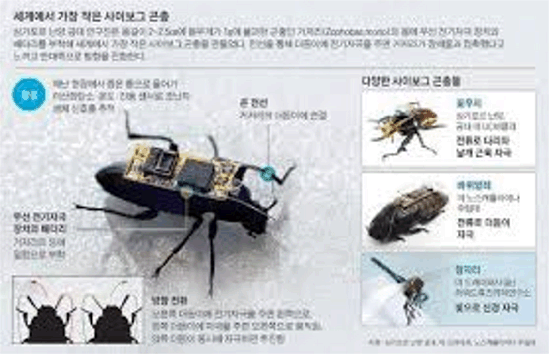Nectar Gan, CNN 분석
2025년 4월 5일 토요일 오후 12시 16분 AEDT·9분 읽기
허 웨이둥 장군은 최근 수십 년 된 군 봄 의식에 불참하면서 시진핑의 고위층 숙청에서 가장 최근이자 가장 고위층 사상자가 되었을 것이라는 추측을 불러일으켰습니다. – 이치로 오하라/요미우리 신문/AP
갈색 군복을 입은 중국 군 간부들이 어린 나무 줄을 따라 흩어지며 새로 파낸 구덩이에 흙을 삽질하고 있습니다. 카메라는 가장 고위층 지도자들을 계급 순서대로 하나씩 보여줍니다. 하지만 눈에 띄는 얼굴 한 명은 눈에 띄게 빠져 있습니다.
수요일 밤 중국 국영 방송에서 방영된 뉴스 세그먼트는 수도 베이징 외곽에서 나무 심기 행사를 다룹니다. 이는 40년 이상 이어져 온 중국의 군 지도부의 연례 봄철 전통입니다.
하지만 인민해방군에서 2위 계급의 군복을 입은 장교인 허 웨이둥 장군은 어디에도 보이지 않았습니다. 그는 공식 국영 통신사의 보도에 참여자로 언급되지도 않았습니다.
허 장군이 이 중요한 행사에 참석하지 않은 것은 강력한 중앙군사위원회(CMC)의 2위 부주석이 시진핑 지도자의 군 최고위층 숙청에서 가장 최근에 가장 고위직에 오른 희생자가 되었을 것이라는 추측을 불러일으켰습니다.
시진핑의 2인자인 허 장군은 해안 지방인 푸젠성에서 경력을 쌓기 시작한 수십 년 전부터 중국 지도자와 오랜 관계를 맺고 있습니다.
허에 대한 조사에 대한 소문은 지난달 중국의 연례 정치 회의 이후 중국 반체제 커뮤니티에서 처음 제기되었습니다. 67세인 그는 3월 11일 중국의 고무 도장 의회 폐막식 이후 3주 동안 대중에 모습을 드러내지 않았습니다.
중국 정부는 공기를 정화하는 데 거의 아무런 조치를 취하지 않았습니다.
3월 27일 기자 회견에서 허의 상황에 대해 질문을 받았을 때 국방부 대변인 우첸은 “이 문제에 대한 정보는 없으며 상황을 알지 못합니다.”라고 말했습니다.
공산당의 24인 정치국에도 속해 있는 허에게 무슨 일이 일어났는지는 현재 불분명합니다.
대중에게 모습을 드러내지 않는 최고 장군에게 3주 동안 모습을 드러내지 않는 것은 드문 일이 아니며 그가 다시 모습을 드러낼 가능성은 항상 있습니다. 그러나 잘 조율된 연례 선전 행사에 모습을 드러내지 않은 것은 상징주의의 중요성에 깊이 조율된 정치 시스템에서 두드러집니다.
“분명히 CMC 부의장 한 명이 없는 것은 상징적으로 중요합니다.” 싱가포르의 S. Rajaratnam 국제학 대학원에서 오랜 PLA 전문가이자 조교수인 James Char가 말했습니다.
공산당 대회와 연례 “2회기” 정치 모임과 마찬가지로 “전 세계가 알고 있는 모든 주요 인물이 같은 그림 속에 등장하는 것이 중요합니다. 왜냐하면 그것은 당의 힘과 더 중요하게는 당의 단결을 보여주는 데 도움이 되기 때문입니다.”라고 Char가 말했습니다.
“나무 잎” 읽기
중국 정치의 불투명한 세계에서 관찰자들은 오랫동안 공산당 전통과 의례의 난해한 신호에 기대어 장면 뒤에서 무슨 일이 일어나고 있는지 해석해 왔습니다. “차잎 읽기”로 알려진 이 규율은 시진핑 시대에 그 어느 때보다 더 중요해졌습니다. 그는 권력을 자신의 손에 집중시키고 의사 결정 과정을 더욱 모호하게 만들었기 때문입니다.
그리고 지금, 일부 전문가들은 시진핑의 최고 장군 중 한 명의 운명에 대한 단서를 찾기 위해 이번 주 행사를 수색하고 있습니다.
이 연례 의식은 1981년 후반에 전직 최고 지도자 덩샤오핑이 엄청난 홍수의 원인을 삼림 벌채로 돌린 후 시작한 전국적인 나무 심기 캠페인의 일환으로 시작되었습니다. 그것은 “조국을 푸르게 하고, 사회주의를 건설하고, 미래 세대를 이롭게 하는” 애국적이고 사심 없는 사업으로 청구되었습니다.
그 다음 봄, 당시 CMC 위원장이었던 덩은 캠페인의 첫 번째 나무를 심었고, 그 이후로 연이은 중국 지도자와 군 고위 간부들이 이어온 전통을 세웠습니다.
수요일은 국영 통신사 신화통신에 따르면 “CMC 지도부가 수도에서 자발적인 나무 심기 활동에 집단적으로 참여한 지 43년째”였습니다.
시진핑이 2012년 말에 집권한 이래로 중앙군사위원회의 두 부위원장은 군 장교들을 이끌고 매년 봄마다 나무를 심었습니다. 허가 수요일에 드물게 자리를 비울 때까지 말입니다.
중앙군사위원회의 1등 부위원장인 장유샤 장군이 이 행사에 참석했고, 위원회의 다른 두 장군인 류전리와 장성민도 참석했습니다.
참석하지 않은 다른 유일한 군복을 입은 중앙군사위원회 위원은 미아오 화 제독으로, 그는 11월에 “심각한 규율 위반”으로 조사를 받고 정직되었습니다. 이는 부패와 불성실에 대한 일반적인 완곡어법입니다.
“허의 부재는 상당히 의미가 있다고 생각하지만, 다시 말하지만 아무도 절대적으로 확신할 수는 없습니다.”라고 차는 말했습니다. “또 다른 학설은 허웨이둥이 지난 2주 동안 준비에 관여했다는 것입니다
대만 주변에서 군사 훈련을 위해.”
화요일부터 PLA 동부 전구 사령부의 연합군은 대만 주변에서 이틀 연속으로 기습 훈련을 실시하여 자치 섬을 봉쇄하고 항구와 기타 중요 인프라에 대한 공격을 시뮬레이션하고 장거리 실탄 공격을 실시하는 능력을 테스트했습니다.
2019년부터 2022년까지 동부 전구 사령관이었던 허는 그의 임기 동안 동부 전구 사령부가 2022년 8월 당시 미국 하원 의장 낸시 펠로시의 타이베이 방문에 대한 보복으로 대만 주변에서 대규모 군사 훈련을 실시하고 미사일을 발사했습니다.
대중의 시야에서 오랫동안 사라지는 것이 항상 중국 관리들에게 문제가 있다는 신호는 아닙니다. 일부는 다시 나타나 직무를 재개했습니다. 또한 동료에 대한 조사를 돕기 위해 부패 척결자에게 심문을 받는 것도 드문 일이 아닙니다.
작년 11월 파이낸셜 타임스는 미국 관리들을 인용하여 국방부 장관 동쥔이 부패 혐의로 조사를 받고 있다고 보도했습니다. 중국 국방부는 이 보도를 “완전한 날조”라고 일축했습니다. 동은 일주일 후 다시 대중 앞에 모습을 드러냈습니다. 이 장관은 또한 수요일에 국영 방송에서 나무 심기 행사에 참석하는 모습이 포착되었습니다.
중국 지도자 시진핑이 2022년에 3번째 임기를 시작했을 때, 그는 중앙군사위원회에 충성파 6명을 포함시켰습니다. 이제 그중 한 명은 부패 혐의로 공산당에서 추방되었고, 다른 한 명은 수사 중 정직되었으며, 세 번째 사람은 이번 주에 있었던 중요한 행사에 참석하지 못했습니다. – 웨 웨웨이/신화/게티 이미지 더 보기
군부 숙청
시진핑은 집권 후 라이벌 세력의 강력한 장군들을 몰아내고 동맹과 충성스러운 제자들로 대체함으로써 세계 최대 규모의 군대에 대한 통제력을 강화했습니다.
하지만 10년이 지난 지금, 인민해방군을 구조적으로 개편하고 최고위 계급을 자신의 부하들로 구성한 시진핑은 여전히 뇌물과 불충성에 맞선 끝없는 투쟁에 깊이 빠져 있으며, 점점 더 자신이 직접 고른 충성파에 등을 돌리고 있습니다.
2023년 여름부터, 중국의 국방부에서 12명 이상의 고위 인사가 핵 전력과 장비 조달에 초점을 맞춘 광범위한 숙청으로 축출되었는데, 여기에는 시진핑이 중앙군사위원회로 승진시킨 두 명의 국방 장관도 포함됩니다.
PLA의 고위 간부를 뒤흔드는 지속적인 혼란은 시진핑이 지정학적 긴장이 고조된 시기에 군에서 체계적인 부패를 종식시키고 전투 준비 태세를 강화할 수 있는 능력에 대한 의문을 제기했습니다.
RSIS의 수석 연구원인 드류 톰슨은 “PLA의 최고 간부에 대한 반복적인 숙청은 시진핑이 자신의 장교단을 신뢰하지 않는다는 것을 보여줍니다.”라고 말했습니다.
톰슨은 “이렇게 많은 고위 장교의 끊임없는 해임과 최상층까지 이어지는 부패의 정도는 의심할 여지 없이 PLA의 사기와 군사 역량에 영향을 미칩니다.”라고 덧붙였습니다.
하지만 일부 분석가들은 이 시점까지 PLA가 고위 사령부의 개편에 익숙해졌을 수 있다고 지적했습니다.
RSIS의 또 다른 연구원인 콜린 코는 “PLA의 리더십 숙청은 PLA의 일부일 정도로 정상화된 듯합니다.”라고 말했습니다.
중국군은 숙청에 익숙해지기 시작했을 수 있습니다. 일상적인 작전 활동에서 고립시키고 평소처럼 업무를 계속할 수 있는 수준이라고 코는 지적했습니다.
“숙청 때문에 PLA가 준비 태세를 완화하기 시작했다는 것을 반드시 의미하지는 않습니다. 이러한 숙청은 PLA가 업무를 더 잘 수행하도록 상기시키는 효과가 있을 수 있습니다. 숙청을 피하고 싶다면 당이 말하는 대로 따르는 것이 한 가지 방법인데, 갈등에 대비하라는 것입니다.”라고 그는 말했습니다.
가까운 친구
미아오와 마찬가지로 허는 푸젠에서 겹치는 세월 동안 시진핑과 긴밀한 개인적 유대관계를 맺었다고 널리 알려져 있습니다. 푸젠에서 미래의 중국 지도자는 1990년대와 2000년대 초에 지방 공무원으로 승진했습니다.
허와 미아오는 모두 초기 경력의 대부분을 푸젠의 전 31군단에서 복무하며 보냈고, 이곳은 시진핑의 주요 권력 기반이 되었습니다. 31군단 출신의 많은 군 장교들은 시진핑이 2012년 말에 집권한 이후 빠르게 승진했습니다.
허 장군도 예외는 아니었습니다. 2013년에 그는 장쑤 군사구 사령관으로 승진했고, 1년도 채 지나지 않아 상하이 주둔지 사령관이 되었습니다. 2016년에 그는 다시 한 번 중국과 인도 국경을 감독하는 서부 전구 사령부의 지상군 사령관으로 승진했습니다.
그는 2017년에 동부 전구 사령관으로 진급하여 대만에 대한 군사적 침략이나 봉쇄를 지휘하는 임무를 맡았습니다.
하지만 시진핑이 허를 신뢰한다는 결정적인 증거는 2022년 제20차 당대회에서 나타났습니다. 허는 중앙위원회 부위원장으로 임명되었는데, 이는 집권 공산당 중앙위원회에서 일한 적이 없는 공무원으로서는 이례적으로 빠른 승진이었습니다.
그 지도부 개편 중에 시진핑은 CMC에 충성파 6명을 포함시켰습니다. 조사를 받고 있다는 것이 확인된다면 그는 시진핑에 의해 숙청된 강력한 군부 조직의 첫 번째 현직 부의장이 될 것이고 현재 CMC에서 은총에서 떨어진 세 번째 구성원이 될 것입니다.
마지막으로 현직 CMC 부의장이 숙청된 것은 30년 이상 전으로, 당시 당 총서기였던 자오쯔양이 1989년 천안문 민주화 운동에서 학생 시위대에 동조했다는 이유로 축출된 때였습니다.
“마침내 허웨이둥에게 일어난 일은 중국의 정치 체제가 시진핑 하에서 어떻게 더욱 구조 조정되고 있는지에 대한 통찰력을 제공합니다.”라고 차는 말하며 PLA가 엄격한 정치 구조를 개혁한 것을 언급했습니다.
“지금의 체제에서 대체할 수 없는 사람은 없다고 생각합니다.”라고 그는 말했습니다. “이것이 정치적으로 강력한 사람이 하는 일입니다. 그는 무자비합니다… 그는 장군들을 경계하게 하기 위해 자신의 계급을 계속 숙청합니다.”
더 많은 CNN 뉴스와 뉴스레터를 받아보려면
Reading the tree leaves: Why a no-show by China’s No.2 general has speculation running wild
Analysis by Nectar Gan, CNN
Sat 5 April 2025 at 12:16 pm AEDT·9-min read

The Chinese military officials in brown uniforms fan out around rows of young trees, shoveling soil into freshly dug pits. The camera pans to the most senior leaders one by one, in order of rank. But one prominent face is conspicuously absent.
The news segment, aired Wednesday night on China’s state broadcaster, features a tree-planting event in the outskirts of the capital Beijing – an annual springtime tradition for the country’s military leadership spanning more than four decades.
But Gen. He Weidong, the second-highest-ranking uniformed officer in the People’s Liberation Army, was nowhere to be seen. Nor was he named as a participant in a report by the official state news agency.
Gen. He’s absence from the high-profile event has fueled ongoing speculation that the second-ranking vice chairman of the powerful Central Military Commission (CMC) may have become the latest – and most senior – casualty in leader Xi Jinping’s purge of the military’s top ranks.
As Xi’s No.2 general, He shares a long-standing relationship with the Chinese leader, dating back decades to the early days of their careers in the coastal province of Fujian.
Rumors about an investigation against He first surfaced among the Chinese dissident community following China’s annual political meetings last month. The 67-year-old hasn’t appeared in public for three weeks since the closing ceremony of the country’s rubber-stamp legislature on March 11.
The Chinese government has offered little in the way of clearing the air.
When asked about He’s situation at a news briefing on March 27, Defense Ministry spokesperson Wu Qian said: “There is no information on this matter, and we are not aware of the situation.”
It is now unclear what has happened to He, who also sits on the Communist Party’s 24-member Politburo.
Three weeks out of the public eye is not unheard of for a top general without a public-facing role and there is always a chance he resurfaces. But his no-show at a well-choreographed annual propaganda event stands out in a political system deeply attuned to the importance of symbolism.
“Clearly the absence of one CMC vice chair is important symbolically,” said James Char, a longtime PLA expert and assistant professor at the S. Rajaratnam School of International Studies in Singapore.
Similar to the Communist Party Congresses and annual “two sessions” political gatherings, “it’s important for all the major figures that the rest of the world know of to show up to be in the same picture, because it helps to demonstrate the power and – more importantly – the unity of the party,” Char said.
Reading the “tree leaves”
In the opaque world of Chinese politics, observers have long leaned on arcane signals of Communist Party traditions and protocol to interpret what is going on behind the scenes. The discipline, known as “tea-leaf reading,” has become more relevant than ever in Xi’s era as he centralizes power into his own hands and makes the decision-making process even more obscure.
And now, some experts are scouring this week’s events for clues on the fate of one of Xi’s top generals.
The annual ritual began as part of a nationwide tree-planting campaign launched by late paramount leader Deng Xiaoping in late 1981, following devastating floods he blamed on rampant deforestation. It was billed as a patriotic, selfless undertaking in “greening the motherland, building socialism and benefiting future generations.”
The following spring, Deng, then chairman of the CMC, planted the first tree of the campaign, setting a tradition that has since been carried on by successive Chinese leaders and military top brass.
Wednesday marked “the 43rd consecutive year the CMC leadership has collectively participated in the voluntary tree-planting activity in the capital,” said Xinhua, the state news agency.
Since Xi came to power in late 2012, his two vice chairmen on the CMC had led military officers to plant trees without fail every spring – until He’s rare absence on Wednesday.
The first-ranking CMC vice chairman, Gen. Zhang Youxia, attended the event, so did two other generals on the commission, Liu Zhenli and Zhang Shengmin.
The only other uniformed CMC member who did not show up was Adm. Miao Hua, who was suspended under investigation in November for “serious violations of discipline” – a common euphemism for corruption and disloyalty.
“I think He’s absence is quite telling, but again, no one can be absolutely sure,” Char said. “There’s another school of thought, which is He Weidong was involved in the last two weeks with the preparations for the military exercises around Taiwan.”
Starting from Tuesday, combined forces of the PLA’s Eastern Theater Command held surprise exercises around Taiwan for two straight days, testing capabilities to blockade the self-ruling island, simulate strikes on its ports and other critical infrastructure, and launch long-range live-fire strikes.
The commander of the Eastern Theater Command from 2019 to 2022 was He. It was during his tenure that the Eastern Theater Command staged massive military drills and fired missiles around Taiwan in August 2022, in retaliation against then US House Speaker Nancy Pelosi’s visit to Taipei.
A prolonged absence from public view does not always signal trouble for Chinese officials. Some have resurfaced and resumed their duties. It’s also not uncommon for officials to be taken in for questioning by graft busters to assist investigations into colleagues.
Last November, Defense Minister Dong Jun was reported to be under investigation for corruption by the Financial Times, citing US officials. China’s Defense Ministry dismissed the report as a “sheer fabrication.” Dong reemerged in public a week later. The minister was also seen attending Wednesday’s tree-planting event on the state broadcaster.

Military purges
After coming to power, Xi consolidated control over the world’s largest military by taking down powerful generals from rival factions and replacing them with allies and loyal proteges.
But a decade on, having structurally overhauled the People’s Liberation Army and stacked its top ranks with his own men, Xi is still knee-deep in his seemingly endless struggle against graft and disloyalty – and is increasingly turning against his own handpicked loyalists.
Since the summer of 2023, more than a dozen high-ranking figures in China’s defense establishment have been ousted in a sweeping purge that focused on the country’s nuclear force and equipment procurement, including two defense ministers promoted to the CMC by Xi.
The ongoing turmoil roiling the senior ranks of the PLA has raised questions over Xi’s ability to end systemic corruption in the military and enhance its combat readiness at a time of heightened geopolitical tensions.
“Recurring purges of the senior-most PLA leaders indicate that Xi Jinping distrusts his officer corps,” said Drew Thompson, a senior fellow at the RSIS.
“The constant removal of so many senior officers, as well as the extent of corruption running to the very top undoubtedly has an effect on the PLA’s morale, and likely also its military capabilities,” Thompson added.
But some analysts noted that by this point, the PLA may have well become accustomed to the shake-ups in its high command.
“Leadership purges in the PLA seem to have become normalized to a point that it’s just part and parcel of being the PLA,” said Collin Koh, another research fellow at RSIS.
The Chinese military may have started to grow accustomed to the purges – to a point where it is able to isolate them from its daily operational activities and go on with business as usual, Koh noted.
“It does not necessarily mean that because of the purges, the PLA has started to relent on readiness. These purges might potentially have the effect of reminding the PLA to do their work better – if anything, if you want to escape the purges, then one way to do that is to obey what the party is telling you, which is to be prepared for conflict,” he said.
A close confidant
Like Miao, He is widely believed to have forged close personal ties with Xi during their overlapping years in Fujian, where the future Chinese leader was rising through the ranks as a local official in the 1990s and early 2000s.
Both He and Miao spent most of their early career serving in the former 31st Group Army in Fujian, which became a major power base for Xi. A string of military officers hailing from the 31st Group Army have been fast-tracked for promotion since Xi took power in late 2012.
Gen. He was no exception. In 2013, he was promoted to commander of Jiangsu Military District; less than a year later, he became commander of the Shanghai Garrison. In 2016, he was promoted yet again to command ground forces of the Western Theater Command, which oversees China’s border with India.
He was promoted to full general in 2017, when he became commander of the Eastern Theater Command, responsible for leading any military invasion or blockade of Taiwan.
But the ultimate sign of Xi’s trust in He came at the 20th Party Congress in 2022, when He landed the CMC vice chairmanship – an unusually rapid rise for an official who hadn’t served on the Central Committee of the ruling Communist Party.
During that leadership reshuffle, Xi stacked the CMC with six loyalists. If confirmed to be under investigation, He would be the powerful military body’s first sitting vice chairman to be purged by Xi and the third member on the current CMC to fall from grace.
The last time a sitting CMC vice chair was purged was more than three decades ago, when then-Party General Secretary Zhao Ziyang was ousted for sympathizing with student protesters in the 1989 Tiananmen pro-democracy movement.
“What happens finally to He Weidong gives us a window into how the political system in China is being restructured further under Xi Jinping,” Char said, noting the PLA’s reform of its rigid political structure.
“I don’t think anyone in the system now is irreplaceable,” he said. “This is what a political strong man does. He’s ruthless… he’s continuously purging his own ranks to keep his generals on their toes.”
For more CNN news and newsletters create an account at CNN.com










